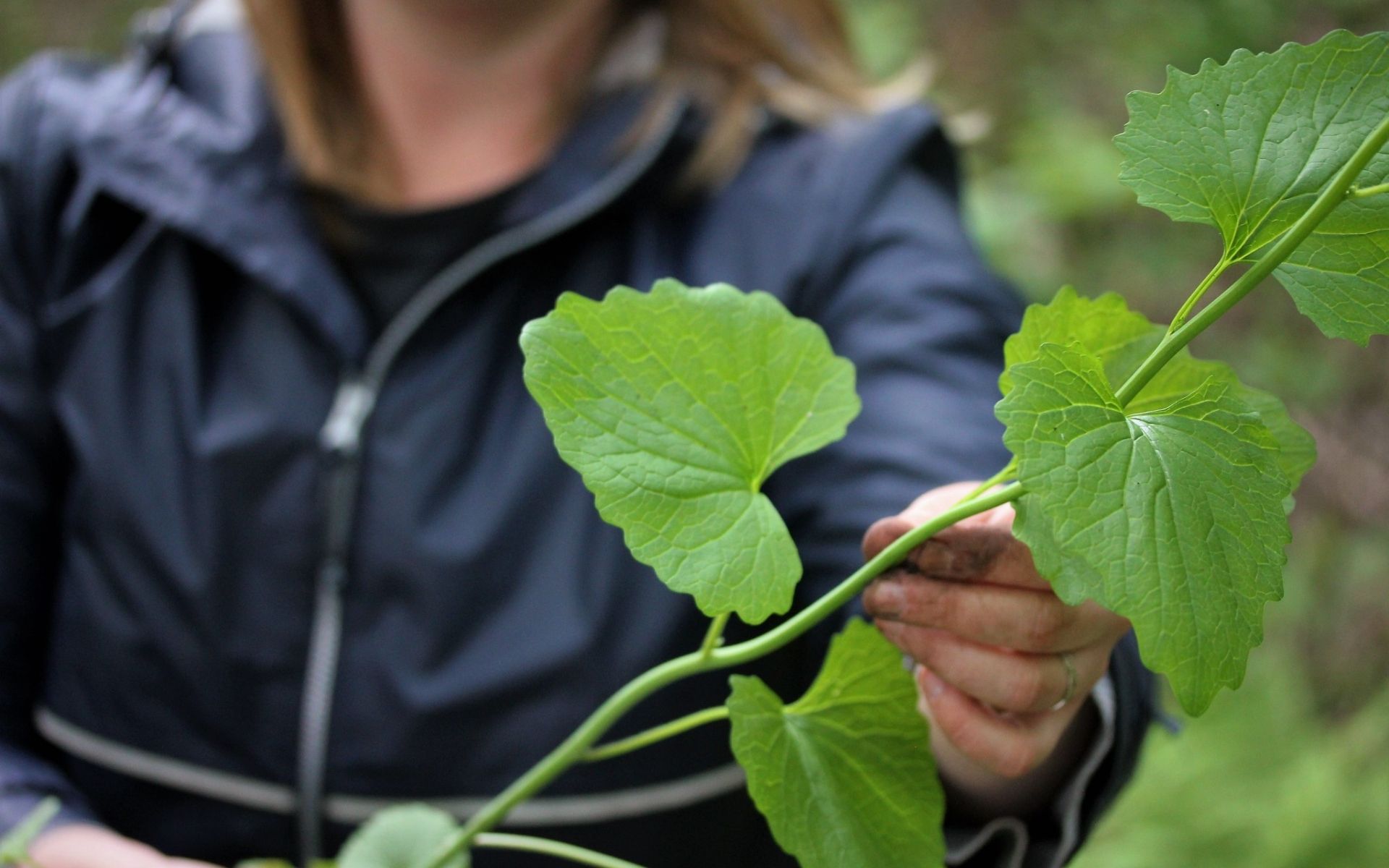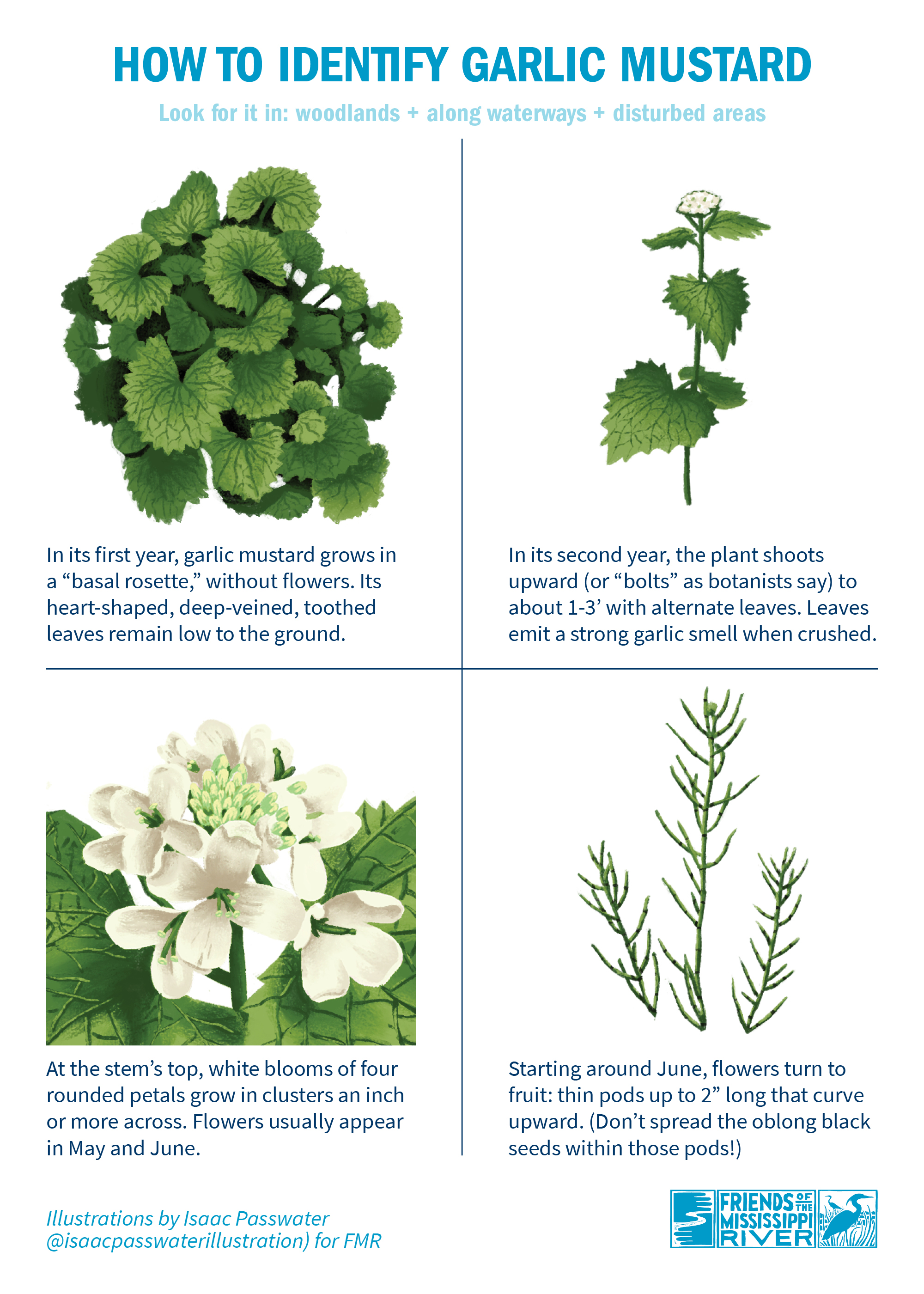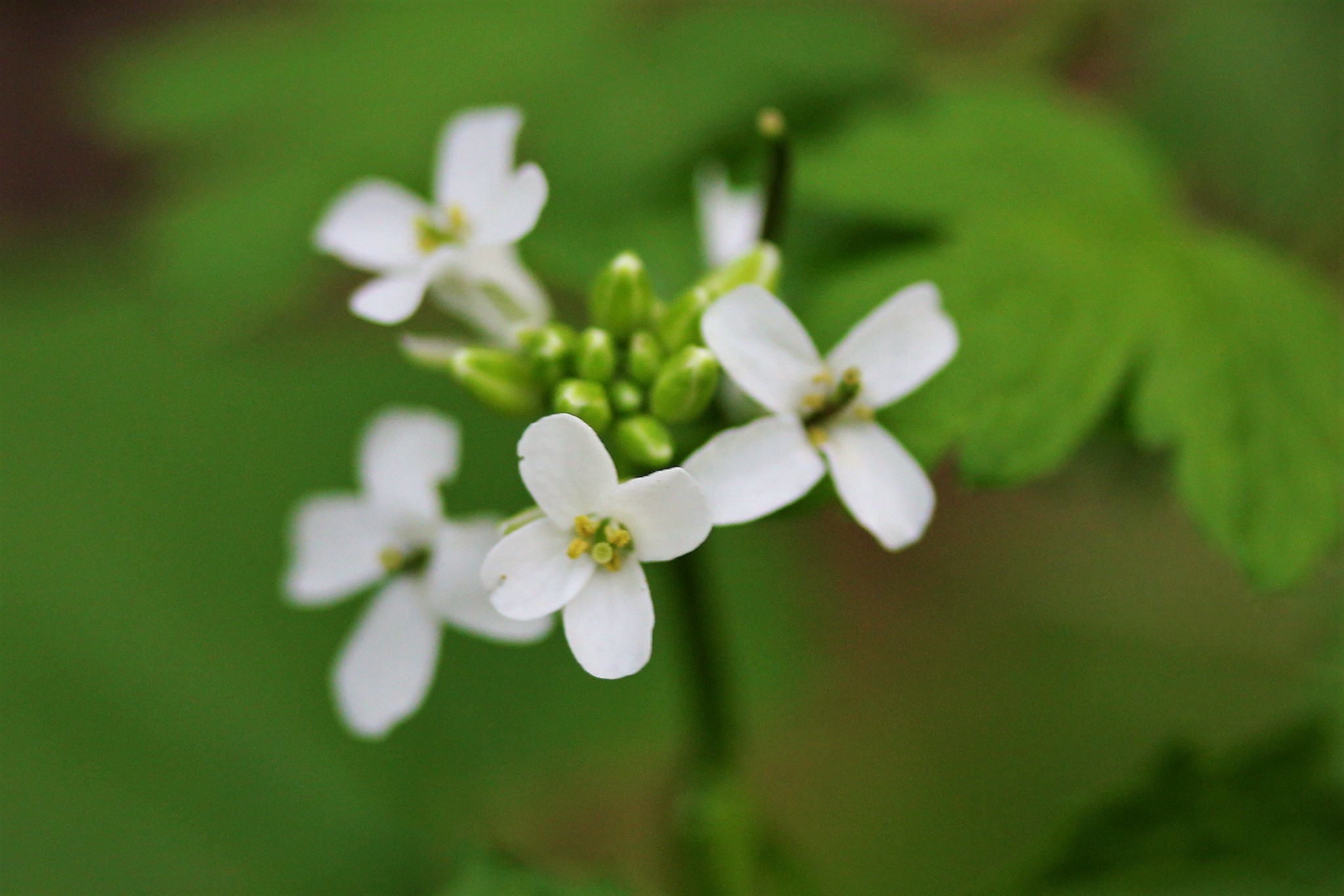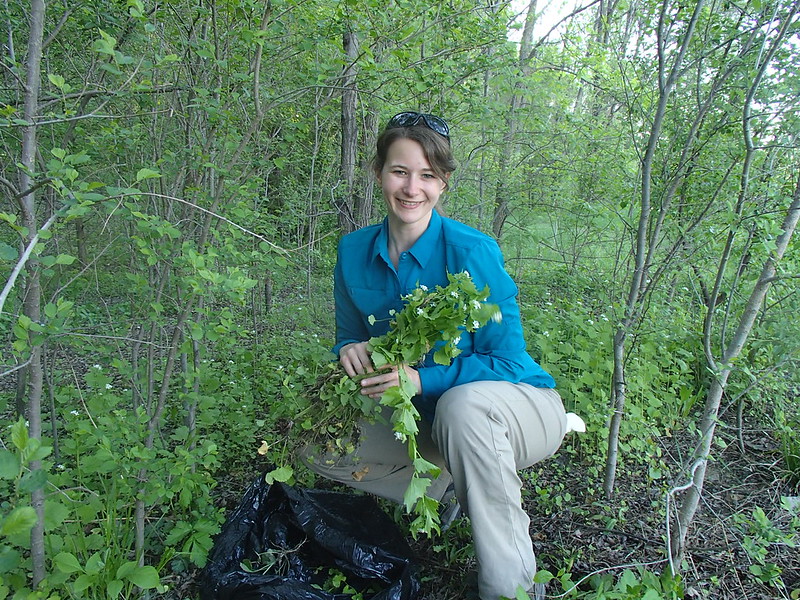Invasive species: Garlic mustard

In its natural range, garlic mustard is important for at least 69 insect species. Humans gather garlic mustard for food and medicine. Brought to the United States by settler colonialists in the 1800s, the species has taken on a different role in its new world. Without the diseases and insects that normally keep it in check, it can become quite invasive.
A few of these plants wouldn't be a problem, but stands of garlic mustard can cover forest floors, making it hard for native wildflowers and other plants to grow. Wildlife relies on these native plants for food and habitat, and their declines can have cascading effects on overall ecosystem health and water quality.
Learn more about garlic mustard and how you can help wildlife and water quality by removing overabundances to keep ecosystems in balance.
How garlic mustard grows
Garlic mustard has a prolific growth rate and can produce hundreds to thousands of seeds per plant. It can easily double its plant population in a single year.
Garlic mustard is a biennial plant, meaning it grows differently in its first and second years. In its first growing year, its leaves remain low to the ground in a basal rosette. In its second growing year, as soon as the snow is gone, the plant shoots upward, or bolts, and will flower. (See illustrations below.)
How to identify garlic mustard
Garlic mustard grows in woodlands, along waterways and in disturbed areas. Look for heart-shaped toothed leaves, deep veins and a strong garlic smell when you crush the leaves. Here's our handy ID guide:

How to remove garlic mustard
Garlic mustard is a disturbance-adapted plant, so avoid methods of removal that cause disturbance, such as mowing, as they will only aid the plant's production. For this reason, simple hand removal is the best method for small areas.
If you want to learn how to hand-pull garlic mustard, join us for a volunteer event! We provide a brief training at the beginning of each invasive species removal restoration event. Check out the FMR events calendar to see what volunteer events are coming up, or sign up for our e-newsletter Mississippi Messages to get opportunities delivered to your inbox.
When hand-pulling garlic mustard plants, timing is key. The prime pulling season typically runs from late April through May, since it's important to remove the plants before they go to seed.
Make sure to remove the upper portions of the roots along with the stem, because buds grow in the top segments of the root with the potential to become stems. To eliminate leftover roots with potential re-growth, try to remove all of the garlic mustard plant roots. Spring rains' damp soils ease tugging and make the removal process even easier.

Garlic mustard flowers are quite beautiful, but to decrease their rapid spread, try to pull plants before they bloom. (Photo by Rich Wahls for FMR)
How to dispose of pulled plants
Responsible disposal is vital to prevent unintentionally distributing the seed of the plant. If you pull garlic mustard before it flowers, you can let it decay where you find it. But if it has flowered or gone to seed, bag what you’ve pulled and bring it to an MDA-approved noxious weed composting site; seed ripening persists even after you remove the plant from the ground.
Better yet, if the site is free of chemicals and cars, steam up these greens or make some pesto! It's not called garlic mustard for nothing — this plant has a wonderful mild garlic scent that fills the air as you pull it, evidence of its great flavor.
Persistence is key
Unfortunately, one year of removal is never enough; persistence is essential to reduce the spread of garlic mustard. The plant seeds remain viable in the soil for up to five years, which means you'll need to revisit the site and continue removing the plant at least once a year.
Eventually, the garlic mustard seed bank will be exhausted, and seedlings will stop reappearing.
If you're pulling garlic mustard on your own property, consider planting native plants like bloodroot or wild ginger to replace garlic mustard and help restore habitat for wildlife.
Volunteer with us!
Volunteers like you provide the hand-pulling power and persistence we need to restore balance at FMR restoration sites.
Your continued efforts have made a noticeable difference, allowing our focus to turn to other steps of habitat restoration. Thank you!
